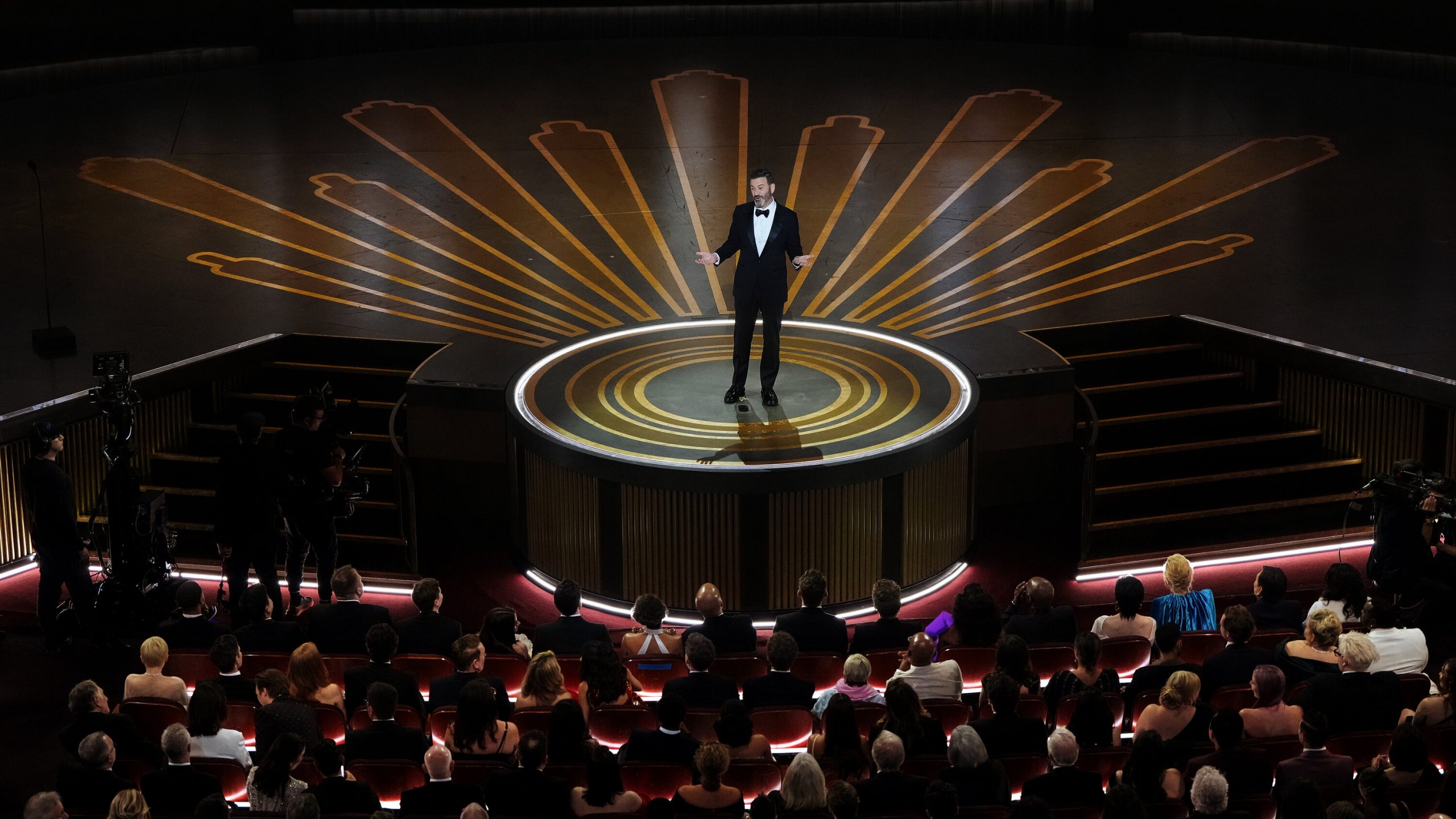When we think of Hollywood’s politics, we often remember recent Oscars acceptance speeches with topics ranging from recognizing the accomplishments of immigrants to the condemnation of drinking cow’s milk. It feels as if every year, moments like these become more and more common, a seemingly odd trend in the entertainment industry. However, this trend is not coincidental. It is a deliberate effort to convey an image to the general public that everyone is happy and everything is fine in Hollywood. But this image is an illusion that hides the significantly darker truth. By filling awards shows, mainstream movies, and social media with broad strokes of socially liberal sentiments, and platitudes, the American film industry has successfully created a shield of faux-progressivity to cover up the rampant labor exploitation that keeps it afloat.
“Labor exploitation? How are ultra-rich celebrity actors and directors exploited?” you may ask. While Hollywood exists in the public consciousness as an extravagant elitist ultra-rich party, this perception completely ignores the massive population of PAs, grips, gaffers, make-up artists, and a variety of other underpaid workers that are necessary for bringing films from the script to the screen.
While all of the aforementioned roles are incredibly exploited, one of the most increasingly overworked and underpaid sectors is visual effects. In 2012, the film Life of Pi, considered a technological marvel at the time, won the Academy Award for Best Visual Effects. During his acceptance speech, the academy cut off VFX supervisor Bill Westenhofer’s mic when he started talking about the financial difficulties (and eventual bankruptcy) of the company Rhythm & Hues, which created the visual effects for the film. This censorship is more than just the Academy’s typical aesthetic or image concerns; it is a purposeful silencing of public discourse regarding the complete exploitation of VFX artists that make these films possible in the first place. Studios build their entire budgets and financial models on the knowledge that they control the labor market and can pay VFX houses next to nothing. If their demands for 100-hour working weeks and minimal pay (average annual salary is $89,000 per year for workers living in the high-cost city of Los Angeles) are not met, they can simply outsource labor overseas or to independent contractors.
This trend continues in the present as well. One anonymous Marvel VFX artist discussed several similar complaints regarding underbidding, noting “What ends up happening is that all Marvel projects tend to be understaffed. Where I would usually have a team of ten VFX artists on a non-Marvel movie, on one Marvel movie, I got two including myself.” Further, directors and higher-ups constantly request reshoots and last-minute changes to scenes, resulting in VFX artists being more and more overworked with less and less pay.
Instances of labor rights violations in Hollywood are not only exploitative but also lethal. During the filming of an independent film called Midnight Rider in 2013, second assistant camerawoman Sarah Jones was hit and killed by a train. The crew was filming in the area without a permit to save costs. After working a 19-hour shift, assistant cameraman Brent Hershman was killed in a car crash while driving home. And while the incident sparked temporary outrage and discussions of implementing a maximum number of hours per shift, no changes were put into action. Hollywood studios and execs continued business as usual.
While VFX artists are still in the arduous process of attempting unionization due to their relatively newfound importance and studio pushback, the vast majority of other film crew members are in unionized sectors but still experience labor exploitation. In 2021, IATSE, a major labor union of 160,000 craftspeople, technicians, and stagehands in theater, film, and television voted to strike to protest unfair wages and dangerous working conditions. However, the strike was averted by a last-minute contract ratification, which divided union votes as to whether the agreements went nearly far enough. Although these workers have relatively more leverage than VFX artists due to their connection to a union, they still fail to truly bargain for humane conditions.
Despite the prevalence of these incidents, Hollywood’s labor exploitation shows no sign of stopping because of the nature of political discourse in the United States of America. Unlike most other developed nations in the West, our mainstream political debates do not center labor rights, let alone any actual left-wing arguments. Thus, the farthest left stances considered by the average person are simply socially liberal ones, regardless of economic position.
We can think of criticism of Hollywood from the perspectives of three different groups of people: conservatives, liberals, and leftists. From the manufactured outrage over trans rights to critical race theory, the rhetoric of American conservatism is heavily guided by social issues as opposed to economic ones. Even when discussing economic issues such as stagnant wages and rising costs of living, conservative politicians choose to blame immigrants instead of corporate practices as the cause. When confronted with Hollywood, the average conservative is conditioned by the nature of American political discourse to negatively respond to its social liberalism. As right-wing media and political commentators complain about the supposed moral decay of the American film industry to the masses, conservatives become outraged by issues such as minority representation.
Liberals, on the other hand, see actions like increasing opportunities for racial minorities and producing more non-white, non-male, non-straight stories as a positive for society rather than a negative. In response, they fight back against conservative rhetoric, defending Hollywood and its actions. Regardless of how earnest these attempts by Hollywood are to create progressive change, conservatives become outraged nonetheless, allowing them to set the frame of the broad debate in purely social terms. The liberal opposition, therefore, is locked into a defense of the conservative-assumed narrative regarding the progressivity of Hollywood.
The leftist contingency differs from the conservatives and liberals in numerous ways. Firstly, it is significantly smaller than the other two. Second, it perceives Hollywood through a lens of class and workers’ rights instead of operating on the mainstream plane of debate. From this perspective, they criticize the inequality and unfair labor practices of Hollywood while also supporting increasing representation and other similar practices. American leftists also tend to hold socially progressive beliefs, which are broadly similar to those of liberals. As a result, they aim to convince liberals to join their cause in defense of workers in the film industry. However, due to the perception of political debates as only containing two opposing sides in the United States, the liberals associate any criticism of Hollywood with the social regressivity of the right, even if these criticisms originate from a different side of the political spectrum and for different reasons.
As liberals reject advances from the left to criticize Hollywood, the political debate continues on the aforementioned plane of existence. With a lack of new points of view, the debate stagnates and ceases to reach any conclusion or declare any winner. This benefits studio executives as the debate evolves from a threat to nothing but noise, which fails to impact studio profits in either direction. This noise also serves as a protective cover from any criticism or exposé or the abuse of workers as everything becomes lost in the fog of reactionary political debate.
Strangely enough, partisanship actually helps create broad appeal and consumption of film. If studios aimed to portray themselves as apolitical centrist entities, conservatives and liberals would not engage in the fruitless debate around media to nearly the same extent. This would part the clouds of discourse that would allow leftists a greater relative share of the intellectual marketplace. In a nonpartisan Hollywood, leftists would be able to better publicly discuss the exploitation of labor that the industry is built on, creating a far more credible threat to the status quo.
Hollywood studios and elites know that if they even let up slightly in their relentless instigation of liberal-conservative bickering, the labor rights movement will gain momentum in collapsing the unstable Jenga tower of a system that is the American film industry. And if Hollywood finally collapses, no other industry is safe.
Featured Image Source: New York Times






Comments are closed.